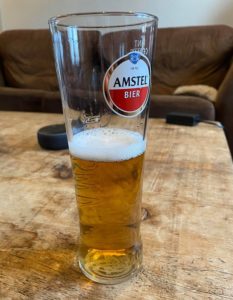Under Construction – please send additions to jon@theatrecrafts.com
Food
Real Food On Stage
Using any foodstuff on stage can be hazardous in ways which are not immediately obvious. The mess created by food is one problem. A wipeable stage surface should be used – old dance floor is ideal, with the seams firmly taped. Using food on a wooden stage can cause problems of staining or food particles getting stuck in wooden boards.
One example is watermelon – while the flesh can be cleaned up, the juice will soak into floor boards, and one venue was infested with ants for many months.
Actors’ allergies (and those of crew members, theatre staff) must be considered, but for intimate theatres, allergies of audience members must be considered as well. Using any food containing allergens should be avoided at all costs.
If it’s essential that actors eat on stage, the food should be as easy to digest as possible, and should not contain bones or anything else which could cause damage if accidentally swallowed.
Some organic foodstuffs must never be used on stage. This includes flour, cornstarch, custard powder and sugar, which are all highly flammable when in dust/cloud form. Throwing flour around on stage, near hot light fittings, could lead to a disaster.
Any powder on the stage floor is a slip hazard, and can also obscure safety markings. Flour in particular should not be used on the stage floor under any circumstance. White sand can be used to achieve a similar effect, but can still be slippery.
Fullers Earth (a clay-based absorbent natural product) is a safer alternative for any dust effects in the air, but can also be a slip hazard on some floors, and must not be used in ways which could result in actors breathing in the dust.
In summary, therefore, there are few few foodstuffs that can safely be used on stage without problems.
Fake Food
Plastic food replicas are available from suppliers such as Props4Shows.co.uk
Their bread ranges are particularly good.
Although lifelike fake food can be expensive, it’s a good investment, and will last for a long time if treated well.
Ice Cream
Vanilla ice-cream can be simulated with Betty Crocker Vanilla Frosting, which is more stable at room temperature, and looks a lot like soft-scoop ice cream. It needs to be refrigerated between uses.
See also Creating Mess On Stage.
Drink
Link to ‘Making Fake Drinks’ on Eric Hart’s excellent prop-making blog
How to mix realistic looking alcohol substitutes
To begin with, some photos of the real thing, for those of you who don’t drink 🙂
Suppliers
Lono.co.uk offer a wide range of alcohol-free canned and bottled drinks
Red Wine
- Ribena plus a dash of blue food colouring
- Red Grape Juice*
- Non-Alcoholic Red Wine
- Water with red food colouring and a drop of caramel food colouring or burnt sugar
White Wine
- Non-Alcoholic White Wine
- Diluted apple juice*

*Important: If you’re making fake white wine for stage use, don’t use apple or grape juice if the ‘wine’ is sitting in a bottle undrunk for a few days. The juice will start to ferment and the bottles may explode! For ‘wine’ that actors don’t have to drink, use a squash / cordial.
Always make juice dilutions fresh each day.
Pimms
- A splash of balsamic vinegar and lemonade
Beer
- Diluted decaffeinated coffee, frothed with an electric whisk (see photo)
Lager
- Ginger Ale (slightly flattened)
Lemonade – Clear
- Very cheaply available, so why not use the real thing?
- Carbonated water (e.g. from a Sodastream) with a tiny amount of yellow food colouring
Lemonade – Cloudy
- Use lemon squash (small amount).
- Adding a fake lemon slice to a jug will convince the audience
Port
- Pomegranate Juice
Whisky / other Dark Coloured Drinks
- Water with gravy browning (a great substitute for burnt sugar, but may not be suitable for vegetarians)
- Diluted tea
- Water with Cola Sodastream concentrate (suitable for vegetarians)
Champagne (by Thomas Monument, via The Blue Room)
- Existing champagne bottle (cleaned)
- Cidre cork from French cider (can be pushed in by hand)
- Yellow food colouring
- Cream soda
- Sugar-lumps
- A few drops of food colouring should be mixed into a glass of sparkling water to make the colouring solution.
- Pour cream soda into the champagne bottle carefully
- Add two teaspoons of the colouring solution
- Put three sugar-cubes into the bottle, and push the cork in as fast as possible.
- Reapply the wire and foil from the original champagne bottle (or use aluminium foil that’s been spray painted gold).
- Shake just before use!
Making Drinking Manageable for Actors
Some Magic suppliers may be able to supply glasses that appear full with only a small amount of liquid.
Glass

Glass products should not be used on stage where an alternative is available.
Sainsburys and other UK supermarkets sell some wine ranges in plastic bottles with screw tops.
Canned Drinks
- A non-alcoholic canned drink can be wrapped with a printed label of an alcoholic brand (or even one you’ve designed yourself to avoid product placement / copyright concerns).
- Lono.co.uk offer a wide range of alcohol-free canned and bottled drinks.
Keywords: fake wine, fake lemonade, fake drinks, fake food, food on stage, drinks on stage, are some ways props crew deal with stage food, Nuts on stage, eating on stage, food on stage.








